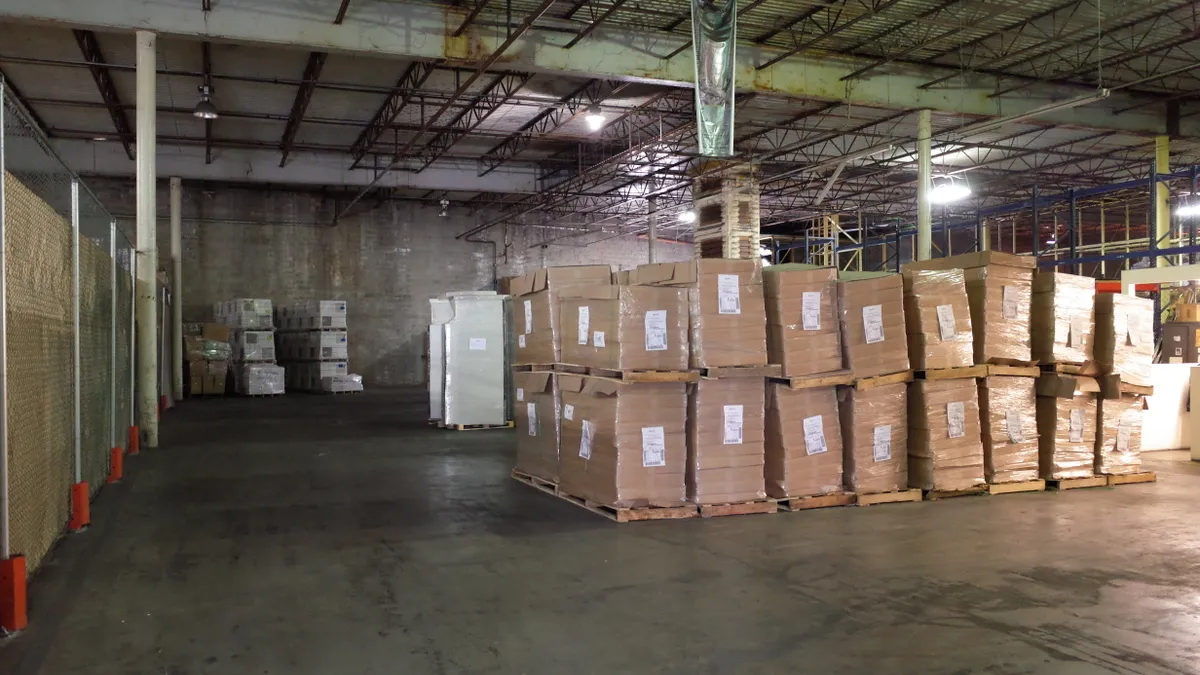The pandemic is just the latest challenge to companies' supply chains. But even as suppliers in China and elsewhere get back up to speed, the crisis shows the importance of CFOs who lead an end-to-end retooling of their supply chains — not just to get through the downturn, but to make them a much bigger part of the company's long-term value to shareholders and stakeholders.
"The coronavirus provides an opportunity for all companies to completely revisit their end-to-end supply chain, from both an ongoing cost and ability-to-grow perspective," Steven Bowen, CEO of consulting firm Maine Pointe, told CFO Dive.
The supply chain represents about 80% of a company's cost and can even be greater in capital intensive businesses, he said. Despite that, its management is often done in a silo, with decisions about suppliers, transportation, and other costs made in a vacuum.
"I've heard it a hundred times," Bowen said. "A CFO will say, 'My procurement department tells me they saved 4% this year but I can't see it on my bottom line.' Well, that does not [indicate] a great partnership from the start."
With their lines of sight into all aspects of the business, CFOs are well positioned to be the executive to lead a revamping of the supply chain, particularly given the increasing strategic focus of their role, Bowen said.
"The most successful CFOs no longer operate in a vacuum," he said. "They work with other c-level executives to go beyond traditional reporting. Supply chain management affects cash flow, growth and, ultimately, shareholder value."
Total value optimization
In his consulting work, Bowen touts what he calls a total value optimization process, in which companies take an integrated, multi-step approach to revamping their supply chains.
The first step is conducting an assessment, starting with the companies who supply your suppliers, to identify optionality, which includes the range of suppliers that can supply each part in the process. A later step is to test the supply chain for stress points, and then look at those against the supply chain's maturity, from the perspective of procurement logistics operations.
These steps can provide visibility into the changes you need to make to optimize the supply chain, he said. That can put you in a position to weather upheaval — whether it is natural disasters, tariffs or a pandemic.
But to make that optimization happen, CFOs must work across the business to create a true integration. "Visualizing the supply chain requires linking decisions to every facet of the organization and the supplier ecosystem," he said. "Procurement, logistics and operations, leader and organizational improvement, and sales and operations planning."
Integration from the start
Bowen called it key that the CFO bring in leaders from all aspects of the business and get them thinking along the same lines, because only then will everyone see how changing the supply chain can impact the overall value of the business. "It's about setting up the right kind of cross-functional team," he said.
That team includes the CFO and other executives, but also the CFO's senior finance people, because finance must be considered from the beginning. "We see a tremendous lack of that," he said.
Failing to integrate finance people from the start is one of the reasons procurement can save money from one supplier without the improvement showing up on the bottom line.
In an example of how savings can get lost, the sales division might give away the cost advantage to customers in the form of lower prices.
"If [you had integration] from the start, then they would understand the differences between what they're going to do and why it doesn't show up on the financial bottom line," he said.
The other ways CFOs can be integral to the transformation is by leading the move to a digital supply chain and using the data that is generated to drive deeper insights, establishing a common language and culture, and bringing in a more global view of geopolitical risks.
Despite the benefits, executives tend to get stuck in their legacy ways of doing things, and the systems they have in place aren't set up to make retooling easy. If a company uses multiple enterprise resource planning (ERP) systems, for example, which is often the case if it has grown through acquisitions, companies can't get the benefit from the data until they get it all into a single format.
You have to "bring all that data together," he said. "Use some external tools to properly harvest the data [from] common or uncommon ERP systems."
Bottom line: Risk factors, including the pandemic and the U.S.-China trade war before that, have intensified the need for an assessment and retooling of the supply chain, a task the CFO is well-placed to undertake, because it requires an end-to-end rethinking involving all aspects of the business.
"The pandemic underscores the volatility of the global supply chain, and has exposed the business to short-term disruptions," Bowen said.



















